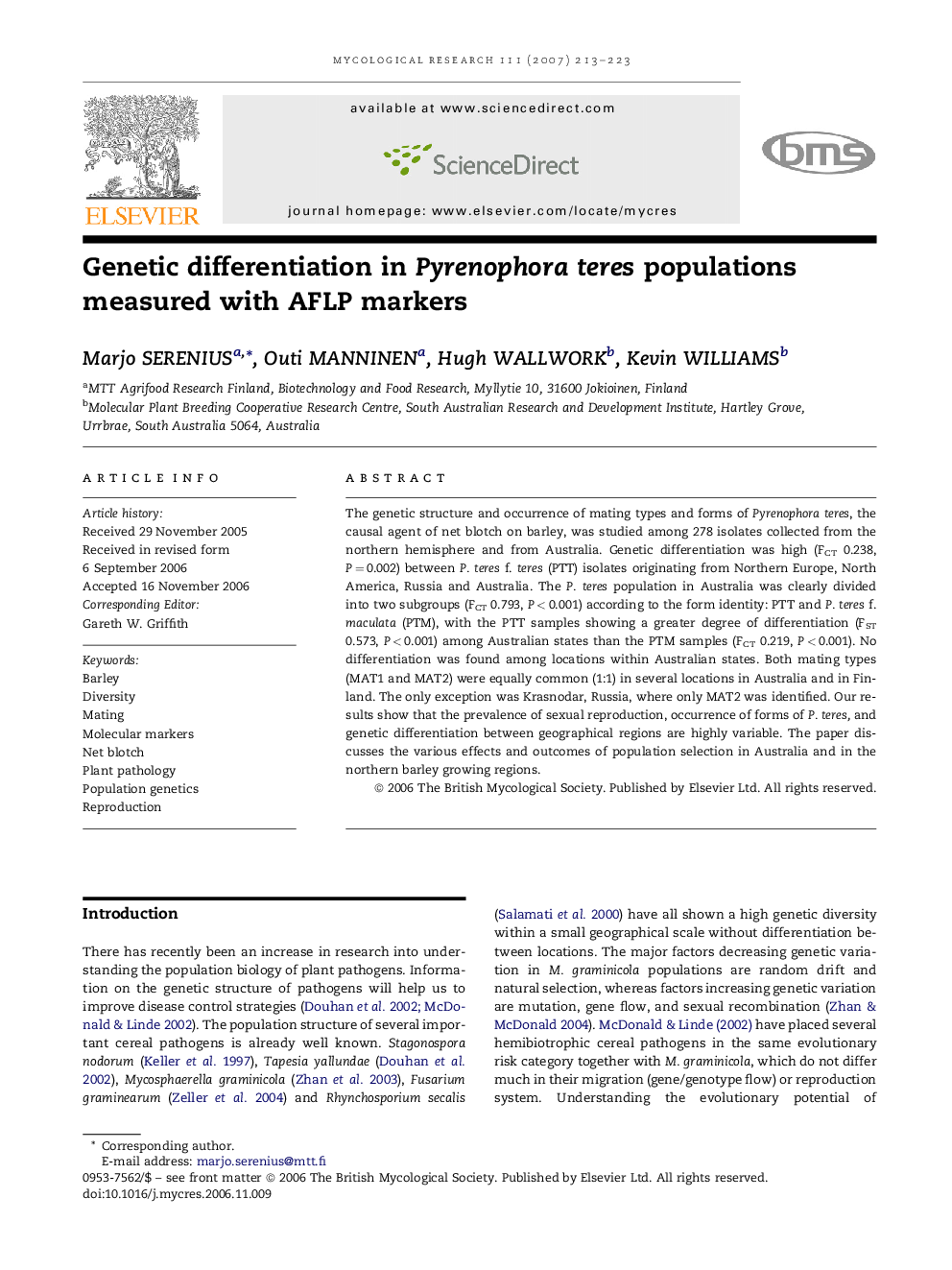| Article ID | Journal | Published Year | Pages | File Type |
|---|---|---|---|---|
| 4357984 | Mycological Research | 2007 | 11 Pages |
The genetic structure and occurrence of mating types and forms of Pyrenophora teres, the causal agent of net blotch on barley, was studied among 278 isolates collected from the northern hemisphere and from Australia. Genetic differentiation was high (FCT 0.238, P = 0.002) between P. teres f. teres (PTT) isolates originating from Northern Europe, North America, Russia and Australia. The P. teres population in Australia was clearly divided into two subgroups (FCT 0.793, P < 0.001) according to the form identity: PTT and P. teres f. maculata (PTM), with the PTT samples showing a greater degree of differentiation (FST 0.573, P < 0.001) among Australian states than the PTM samples (FCT 0.219, P < 0.001). No differentiation was found among locations within Australian states. Both mating types (MAT1 and MAT2) were equally common (1:1) in several locations in Australia and in Finland. The only exception was Krasnodar, Russia, where only MAT2 was identified. Our results show that the prevalence of sexual reproduction, occurrence of forms of P. teres, and genetic differentiation between geographical regions are highly variable. The paper discusses the various effects and outcomes of population selection in Australia and in the northern barley growing regions.
